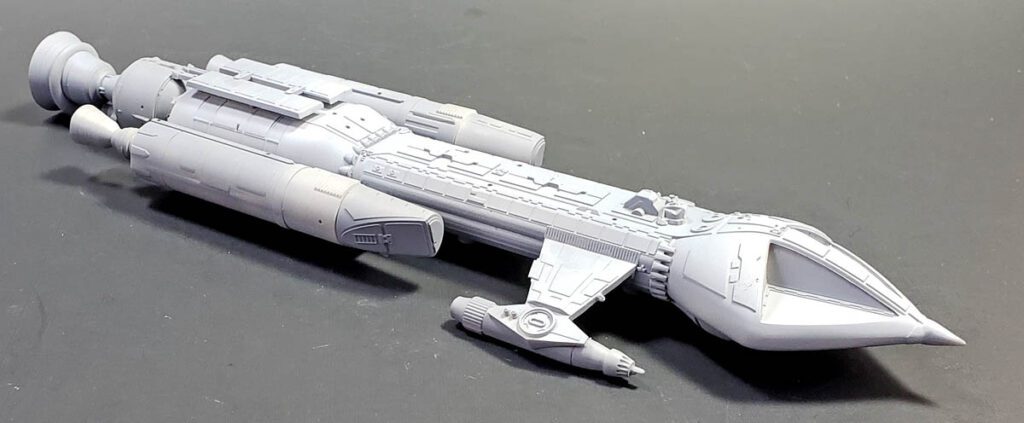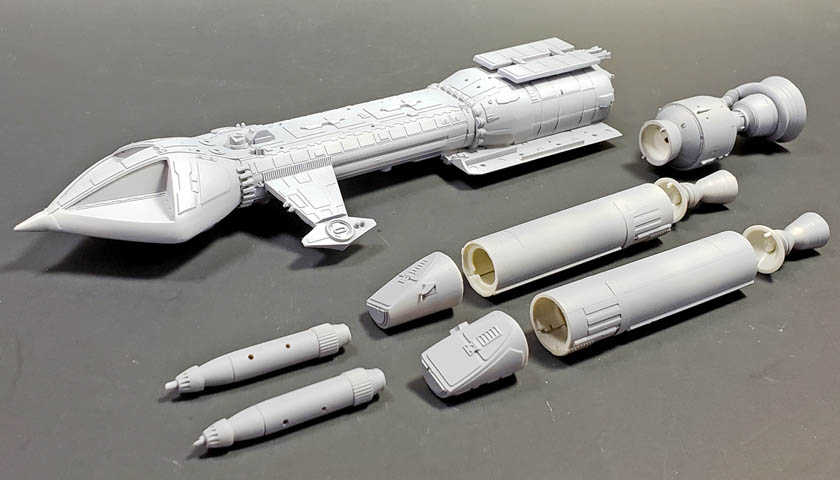Growing up in the late 70s and early 80s, there was plenty of scifi going on. Star Trek had been around for years, of course. UFO seemed a bit more relatable, but still definitely “out there”. Star Wars‘ entrance had changed the whole picture, especially as it related to special effects. Battlestar Galactica came along, and carried the ball down the field for the genre each week on television.
Yet of all the shows from that era that I watched, I think the one that my youthful mind thought could actually happen was Space 1999.
While the basic premise – the moon being blown out of Earth’s orbit – was a little far-fetched (OK, a lot far-fetched), it was simply a plot device to enable the rest of the story to happen. The actual people and things in the show were very believable. A look through school books of that time, and from a few years prior, pointed to a future that might very well look like the show.
Setting Expectations
I had no problem in the mid-70’s accepting that by the turn of the century – when I would be an “old man” in his early 30s – that we’d be wearing one piece jumpsuits with a big “V” on the front, flying in hover cars, and regularly going to the moon. Mars would be in the first stages of colonization, and mankind would be on its way to a new era of space exploration.
All of that wasn’t just a fantasy notion brought about by media. I’d submit that the media was driven by an expectation based on the breathtaking pace of technological development. In 30 years the US had gone from a military that still used biplanes to landing on the moon. Why would anyone expect the next 30 years to be any different?
Space 1999, for me, fit right in that notion. While I loved the other franchises of the time, it seemed within grasp of reality. The clothes and look of the environment seemed to fit where popular media said we were heading. A science colony on the moon didn’t seem a bit of a stretch. Even the look of the ships fit.
The Spaceship Aesthetic
While I always loved the characters and storylines of those scifi properties, let’s face it – the big draw was the spaceships. Whether it be Star Trek’s Enterprise, UFO’s Interceptors, or Star Wars’ X-Wing Fighters, the rule of cool generally prevailed. It had to look great, fly fast, and shoot down the bad guys in no time at all.
Space 1999 took a different route. The primary vehicle used on the show, the Eagle transport, seemed almost dull in comparison to those others. An awkward froward crew area, a truck-like body covered in an exoskeleton, giants pods for landing gear mounts, and those large, exposed fuel tanks terminating in very pedestrian rocket thrusters. No impressive weapons, or shields, or jumps to light speed. It was like a Ford F-150 truck to everyone else’s’ Camaro, Firebird, and Corvette.
Yet that very “mundaneness” was what I think made it so believable. The Eagle looked like something NASA might come up with. Rather than looking like a futuristic space fighter, the look of a practical, utilitarian space vehicle was perfectly captured. While there was nothing exciting about it, I could really imagine that this was what 1999 might look like.
A Fighter Version
In one of the episodes, called War Games, a variant of the Eagle transport appeared. The Hawk Mk. IX had been conceived as an anti-UFO fighter, to be deployed from a Hawk fighter base on the moon. I won’t bore you (or spoil it) with the how and why the Moonbase Alpha folks encountered it as they flew through space. Suffice to say, they encountered more than a few of the Hawks, all gunning for the show’s heroes.
MPC did a nice job of capturing the look of the Hawk. Though a bit small in 1/72 scale, the kit’s surface is very detailed, with very delicate separate parts that capture the familiar exoskeleton of the show’s “birds”. Unlike the Eagle transport in the same scale, the various grid work pieces aren’t cast in, which definitely improves the look of things.
There is no cockpit interior, but given the scale, and the likely simplicity of it, that’s not a bad thing I suppose. The sprues have some flash, and most parts have a mould seam line that must be dealt with. Fortunately, careful attention to detail in parts cleanup is well rewarded – the kit fits together quite nicely, with only a little sanding needed on most join lines. On the crew section, I did use some Mr. Surfacer to fill in some minor cracks in the join, but they were barely more than hairline cracks.
The Construction Plan
The Eagle generally had a fairly mundane paint scheme, with most color being part of the pod slung under its fuselage. The Hawk, however, was decorated with large swathes of bright orange. I don’t recall that any reason was stated for that in the show, but I have read in several places that the coloring was done simply to make it easily distinguishable from the Eagles.
Because of the many bands of orange around the ship, I decided to break down as much of it as I could in a way that would ease painting and masking.
The primary fuselage section consists of an upper and lower half, with two small forward wings being inserted in, as well as an end piece to mount the engine thruster on. Some sanding will be needed here, but as previously mentioned, with careful clean up and test fit, none of it presents a problem.
The two engine thrusters on either side were assembled in three sections – the forward piece eventually being orange, the aft piece silver, and the center section mostly white. The various parts use tabs in such a way as to make differentiation between left and right easily. By keeping those parts separated until after painting, I’ll be able to minimize how much masking is needed.
The Framework And Priming
There are quite a few external framework pieces. Test fitting showed they all go on nicely. Be very careful removing them from the sprue – several are quite fragile, and could be broken easily. My plan is to add those at the very end, to make painting, decaling, and weathering much easier.
With all the major components assembled, and all parts cleaned up and removed from the sprues, I primed the model. Badger’s Stynylrez Primer was used. I started to prime it in the white color. However, I’d forgotten that the white version of that brand always seems to “bead up” a bit unless sprayed on very, very lightly. I added a touch of ray primer into the color cup, and that made the application much easier.
I didn’t mind the priming being in gray, really. While the Hawk only appeared in one episode, and did not show much if any weathering, my plan for the finish is to go a bit down the “what-if” route. I’ll re-imagine it as being a full production Hawk fighter, deployed to the moon to hunt down the occasional UFO interloper. That will allow for a lot more creative freedom in the finish. (Which translates into more fun! 😉 )
Capturing The Show
Those pre-teen years for me were quite fun. Many of the franchises that are now considered the “foundational” media for much of the modern media were still brand new. I was young enough that it all seemed quite plausible – especially Space 1999 – yet old enough to appreciate the way that a possible future was being depicted that had some basis in reality. While I’d have loved to be flying around in an X-Wing Fighter, I thought that things like the Eagle and Hawk were much more realistic.
MPC has done a great job with this kit. It’s not Bandai or Tamiya, by any stretch. Yet it is quite builadable, and fun too. If you’ve been on the fence about it, I can highly recommend it.
Next up will be painting all that orange and white, adding in the extensive and quite gorgeous decals, and weathering it all.











Leave a Reply